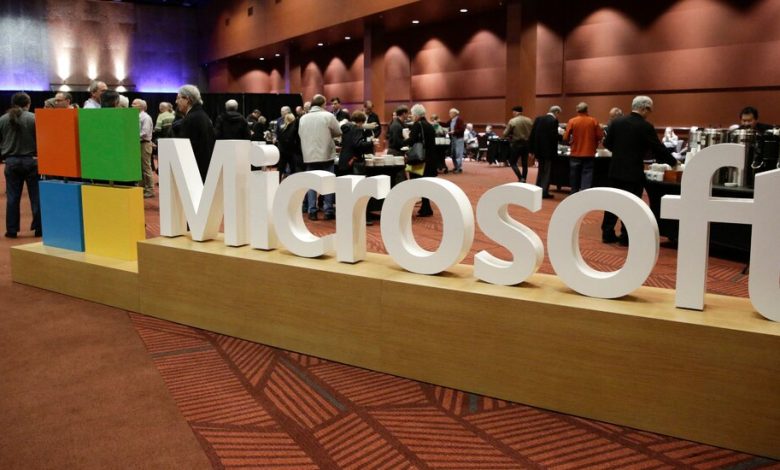Microsoft’s A.I. Investment Stabilizes Its Cloud Business

Microsoft on Tuesday reported strong sales in its latest quarter, showing that its corporate customers have been shaking off jitters about spending heavily in the uncertain economy.
The results also showed early signs that the company’s investments in generative artificial intelligence were beginning to bolster sales, most notably reversing what had been slowing growth of the company’s important cloud computing product.
The company had $56.5 billion in sales in the three months that ended in September, up 13 percent from a year earlier. Profit hit $22.3 billion, up 27 percent. The results beat analyst expectations and Microsoft’s own estimates.
Microsoft had told investors that A.I. wouldn’t start producing meaningful results until after the start of 2024, when more products became widely available. The company and its competitors are racing to put generative A.I. into nearly every product they offer. Microsoft is seen by many companies as a leading A.I. provider, thanks to its partnership with — and $13 billion investment in — the start-up OpenAI, which introduced the chatbot ChatGPT almost a year ago.
Microsoft’s flagship cloud computing product, Azure, grew 29 percent, up from 26 percent in the previous quarter. About three percentage points of Azure’s growth came from generative A.I. products, including the access Microsoft provides to OpenAI’s GPT-4 language model, more than the company had told investors to expect.
More than 18,000 organizations are using Microsoft’s Azure OpenAI services, Satya Nadella, the company’s chief executive, said in a call with investors. He said that included customers who had not used Azure before.
“Azure again took share as organizations took their workloads to our cloud,” Mr. Nadella said.
Investors sent Microsoft’s share price up about 4 percent in after-hours trading. The company said that sales could increase as much as 8.7 percent in the current quarter, exceeding investor expectations, and that it was investing in building data centers to support the demand for A.I. and cloud computing.
The companies and other organizations that use cloud computing had become more conservative about their spending over the past year, as they looked to optimize their costs in the uncertain economy. So even as Microsoft and its competitors have raced head first into the new generation of A.I., they have been facing tight customer budgets.
Sales from Microsoft’s commercial cloud subscriptions to its productivity suite, including Excel, Word and Teams, accelerated, growing 18 percent in the quarter. The integration of Microsoft’s generative A.I. “Copilot” into these products will start becoming widely available to commercial customers next month, which the investment bank UBS called “easily the most anticipated GenAI-based software application launch.”
Mr. Nadella said 40 percent of the Fortune 100 companies have been testing the offering in a limited preview, and “so far, so good.”
In February, the company released a chatbot integrated into its Bing search engine. But there is “no evidence” Bing has gained any search market share, UBS told investors this month. Search and news advertising was up 10 percent in the most recent quarter.
“We still see this as a long-term play,” Brett Iversen, the company’s head of investor relations, said in an interview.
Microsoft’s personal computing business grew just 3 percent, to $13.7 billion, reflecting how consumer behaviors have shifted since the laptop-buying binges of the pandemic. The revenue of the Windows operating system installed on new computers was up 4 percent.
Gaming provided a consumer bright spot, with Xbox content and services up 13 percent.
Mr. Iversen said the release of Starfield, a role-playing video game developed by Bethesda Game Studios, which Microsoft bought in 2020, provided a notable lift.
The results run through the end of September, so do not include the cost of Microsoft’s $69 billion deal to buy the video game maker Activision. That deal closed on Oct. 13 after Microsoft turned the tide on 21 months of regulatory scrutiny.
Revenue for LinkedIn, the professional social network that Microsoft acquired in 2016, grew just 8 percent to $3.9 billion in the quarter. LinkedIn’s sales growth slowed, particularly among its products for recruiters. It announced layoffs last week, its second round this year.
This month, Microsoft also disclosed that after a decade-long audit, the Internal Revenue Service determined that it owed $28.9 billion in back taxes for 2004 to 2013. The I.R.S. and Microsoft have clashed over how the company shifted profits overseas. Microsoft said it was appealing the finding, in a process that could take years to resolve.





